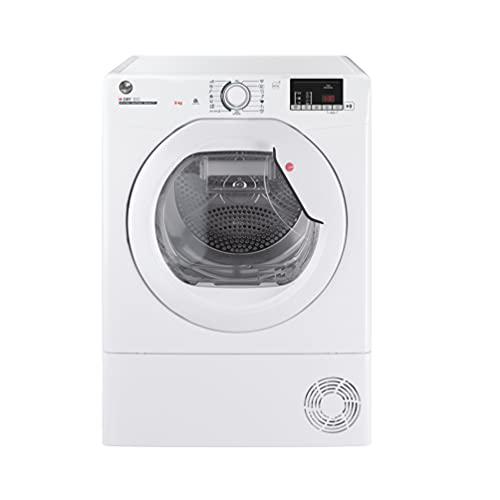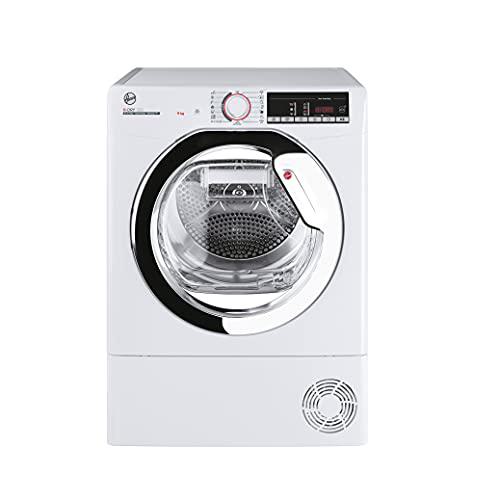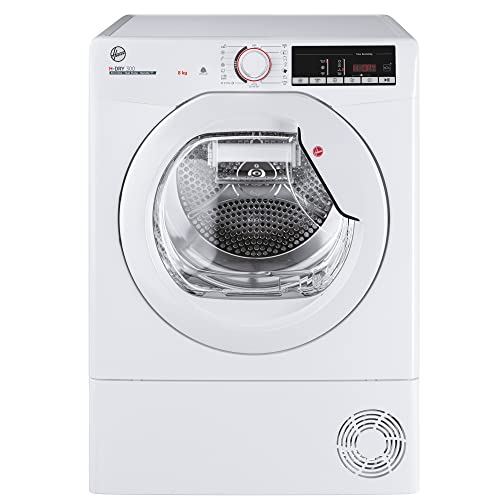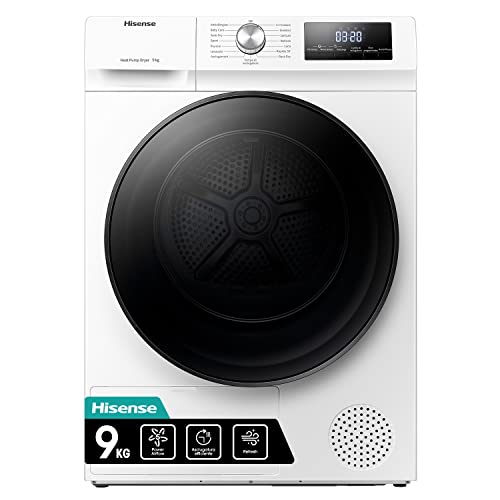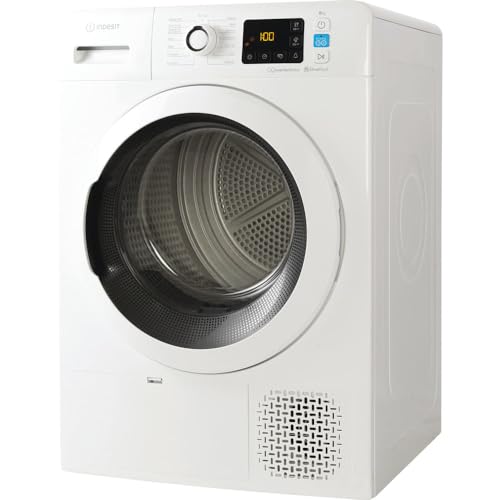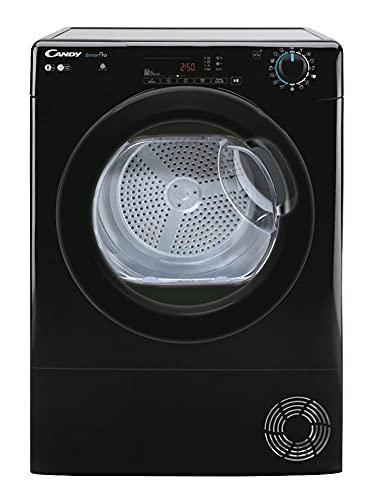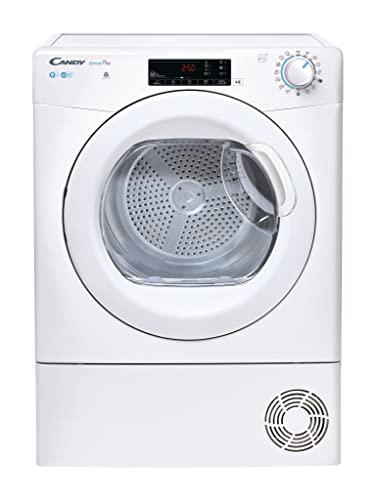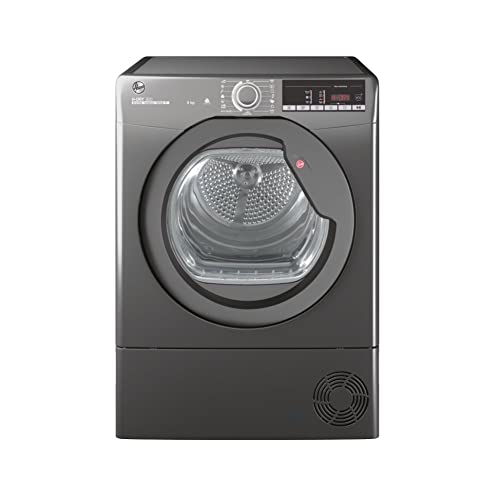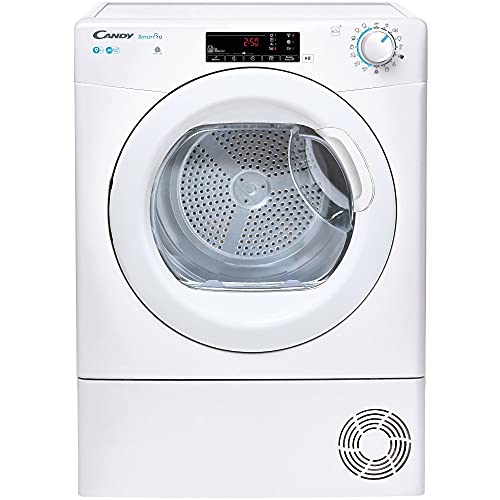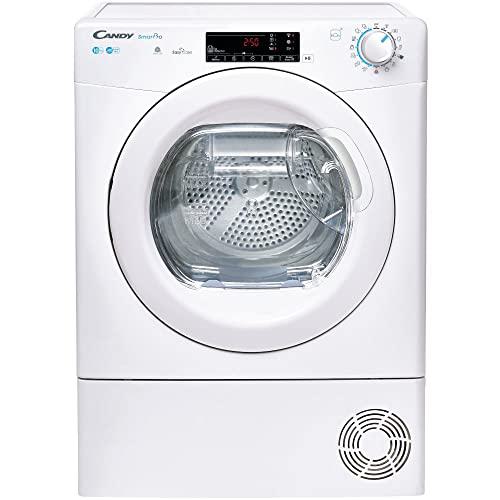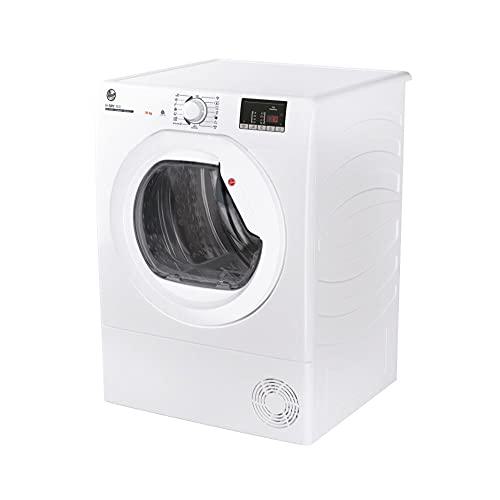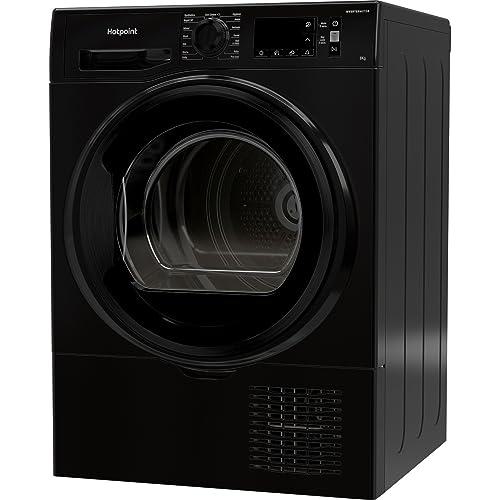How much does a cheap dryer cost?
A dryer is considered cheap if it costs under £380. 26% of all dryers fall into this category. A dryer is very cheap if it costs under £340, with 12% of all dryers meeting this criterion. A dryer costing more than £380 is not considered cheap.
The following chart shows the price distribution of tumble dryers on the market.
[vertical-chart-14327415375316308]
What are the cheapest dryer brands?
The cheapest tumble dryer brands are as follows.
- Candy (Average price: £360)
- Hoover (Average price: £385)
- Beko (Average price: £400)
The following tumble dryer brands offer the best value for money.
- Candy (Average value for money ratio: 7.8 points)
- Hoover (Average value for money ratio: 7.7 points)
- Beko (Average value for money ratio: 7.5 points)
Note: Products currently available are listed first.
The chart below ranks dryer brands by price.
[horizontal-chart-26580829414421101]
Are cheap dryers good?
Cheap dryers can still be good, depending on the features and performance. Some models have efficient motors, energy-saving functions, and useful extras like humidity sensors or anti-crease technology. However, they may lack advanced features found in higher-priced models.

What are the main advantages of cheap tumble dryers?
Cheap tumble dryers have the following advantages over other dryers:
- Available in all three types: Cheap tumble dryers include heat pump, condenser, and vented models.
- Slim models available: Some cheap tumble dryers have a slim design, making them suitable for small spaces.
- Lighter weight: Cheap tumble dryers weigh about 11 kg less than the market average (34 kg vs 45 kg).
- Shorter ECO cycle: Cheap tumble dryers complete the ECO cycle about 35 minutes faster than the market average (155 min vs 190 min).
- Useful features included: Most cheap tumble dryers have humidity sensors, a delay start option, and a selectable drying level.
- Anti-crease functions: Many cheap tumble dryers use post-drying movement and bidirectional movement to reduce creases.
- Advanced features in some models: More advanced cheap tumble dryers include a laundry detection system, memory function, Wi-Fi connectivity, Bluetooth, NFC connectivity, smart diagnosis, Scan & Dry, ECO indicator, and smart pairing.
- Additional design improvements: Some cheap tumble dryers have a special drum design, antivibration design, interior light, and a special filter type.
What are the main disadvantages of cheap tumble dryers?
Cheap tumble dryers have the following disadvantages compared to other dryers:
- Fewer energy-efficient models: Most cheap tumble dryers are condenser or vented models, which consume more energy in the long run.
- Fewer heat pump models: Only 32% of cheap tumble dryers use heat pump technology, which is the most energy-efficient option.
- Lower energy classes: Less than 3% of cheap tumble dryers belong to class A+++, compared to 31% of all tumble dryers on the market.
- Higher noise levels: Cheap tumble dryers are slightly louder than the market average (66 dB vs 65 dB).
- Fewer special cycles: The Hygiene cycle is available in 14% of cheap tumble dryers (vs 33% market average), and the Duvet cycle in 20% (vs 48%).
- Fewer advanced functions: Only a few cheap tumble dryers include gentle drying, Silent, and Fast drying functions.
- Fewer inverter motors: Only 7% of cheap tumble dryers use an inverter motor, which improves efficiency and durability.

What should you consider while choosing the best cheap tumble dryer?
When choosing the best cheap tumble dryer, consider the following:
- Dryer type: Heat pump models are the most energy-efficient, but condenser and vented dryers are more common in lower price ranges.
- Energy efficiency: Look for models with A++ or A+++ ratings to reduce electricity costs over time.
- Capacity: Choose a size that matches your laundry needs, with 7 kg, 8 kg, and 9 kg options available.
- Noise level: Some cheap dryers are louder than the market average (66 dB vs 65 dB), so check the noise rating if you prefer a quieter model.
- Drying programs: Ensure it includes key cycles like a Quick dry, Cupboard dry, and an anti-crease function.
- Features: Advanced models may have humidity sensors, Wi-Fi connectivity, smart diagnosis, or a laundry detection system.
- Build quality: Some cheap dryers have an antivibration design, special drum design, and an interior light for better usability.
- Motor type: Inverter motors are more durable and efficient, but only 7% of cheap dryers include them.
Which type of tumble dryer is the cheapest?
The cheapest type of tumble dryer is an air-vented dryer. On average, air-vented dryers cost £280, which is £80 cheaper than condenser dryers (£360) and £150 cheaper than heat pump dryers (£430). Among cheap tumble dryers, 32% use heat pump technology, 41% are condenser dryers, and 27% are air-vented models.
Heat pump dryers are the most expensive because they use advanced technology which recycles and reuses hot air. This system requires costly components such as a heat pump and a refrigeration mechanism. Their energy-efficient operation and gentle drying process appeal to eco-conscious buyers, so manufacturers position them as premium products. The long-term energy savings and superior fabric care justify their higher upfront cost.
Condenser dryers cost less than heat pump models because they use a simpler mechanism, without a heat pump or refrigeration system. They collect moisture in a tank or drain it away, which is less complex and reduces production costs. While they consume more energy than heat pump dryers, their lower purchase price makes them attractive to buyers who focus on affordability.
Air-vented dryers are the cheapest because they have the simplest design. They expel moist air directly outside through a vent, without using condensers, tanks, or heat pumps. This straightforward system reduces production costs. Their lack of advanced features makes them affordable, ideal for those who prioritize low initial costs over energy efficiency or installation flexibility.
From a long-term perspective, a heat pump dryer is the best choice. Despite its higher initial cost, its lower energy consumption saves money over time. Heat pump technology reduces electricity usage, so the price difference is usually recovered within a few years. This makes it a more economical and environmentally friendly option.
When comparing energy consumption:
- Heat pump dryers use on average 235 kWh per year
- Condenser dryers use on average 561 kWh per year
- Air-vented dryers use on average 510 kWh per year
At a rate of £0.3 per kWh, a heat pump dryer saves about £100 per year compared to condenser or air-vented models. If a heat pump dryer costs £300 more, the savings will offset the price difference in three years.
The chart below ranks the different types of drying technologies by price.
[horizontal-chart-33603235935923907]
The chart below illustrates the distribution of drying technologies for cheap dryers (under £450).
[pie-chart-14813414638515540]
The best cheap heat pump tumble dryers available are as follows.
- Hoover H-DRY 300 HLEH8A2DE (~£400, 8 kg)
- Hoover H-DRY 300 HLEH9A2TCE (~£390, 9 kg)
The following list includes the best cheap condenser tumble dryers.
- Candy Smart Pro CSOE C10DCGR0 (~£350, 10 kg)
- Candy Smart Pro CSOE C9TG (~£300, 9 kg)
The best cheap vented tumble dryers available are as follows.
- Candy Smart CSEV9DF (~£260, 9 kg)
- Hoover H-DRY 100 HLEV9DGB (~£300, 9 kg)
Note: Products currently available are listed first.
What is the capacity of cheap dryers?
The capacity of cheap tumble dryers ranges from 2.5 to 10 kg. The most common capacities in cheap dryers are as follows:
- 8 kg (39%)
- 7 kg (21%)
- 10 kg (14%)
- 9 kg (12%)
- 3 kg (6%)
- 2.5 kg (5%)
Smaller capacity dryers are not necessarily the cheapest.
Drum volume in cheap tumble dryers ranges from 42 to 125 litres, with an average of 118 litres, which matches the market average.
Depth varies between 41 and 66 cm, meaning some slim models are available.
Weight ranges from 17 to 50 kg. On average, cheap dryers weigh 34 kg, which is 11 kg lighter than the market average of 45 kg. By type:
- Cheap heat pump dryers weigh on average 44 kg
- Cheap condenser dryers weigh on average 34 kg
- Cheap air-vented dryers weigh on average 28 kg
The capacity distribution for cheap dryers is displayed in the chart below.
[pie-chart-10002610368612570]
The following list presents the best cheap tumble dryers with a capacity of 7 kg.
- Beko DTLCE70051W (Overall score: 6.11 points; Price: £270)
- Beko DTLCE70051B (Overall score: 5.96 points; Price: £250)
The following list presents the best cheap tumble dryers with a capacity of 8 kg.
- Hoover H-DRY 300 HLEH8A2DE (Overall score: 7.86 points; Price: £400)
- Hoover H-DRY 300 HLEH8A2TES (Overall score: 7.77 points; Price: £390)
Note: Products currently available are listed first.
How energy-efficient are cheap tumble dryers?
Cheap tumble dryers have worse energy efficiency than the overall market. Only 26% of cheap models belong to class A++, 6% to A+, 40% to B, and 25% to C. Less than 2% reach class A+++. In the overall market, 31% of tumble dryers belong to class A+++, 36% to A++, 5% to A+, 19% to B, and 9% to C.
Cheap heat pump dryers use 1.2–2.6 kWh per cycle in full load (average 1.91 kWh, same as market average of 1.93 kWh) and 0.7–1.8 kWh in half load (average 1.08 kWh, same as market average). Their annual energy use ranges from 210 to 310 kWh with an average of 235 kWh, same as the market.
Cheap condenser dryers use 4.74 kWh per full load and 2.56 kWh per half load. Cheap air vented dryers use 4.45 kWh per full load and 2.27 kWh per half load. These types consume more energy in all brands.
Energy class results in cheap dryers are worse because they include more condenser and air vented models, which use more energy.
Water recovery classes in cheap dryers range from A to C. Only 10% reach class A, 63% belong to class B, and 27% to class C. In the overall market, 23% belong to class A, 67% to B, and 9% to C.
Energy efficiency classes for cheap dryers are illustrated in the following chart.
[pie-chart-18001817851517605]
Are cheap dryers loud?
Cheap tumble dryers have noise levels between 55 and 69 dB. The average is 66 dB, which is 1 dB louder than the market average of 65 dB.
How many drying programs do cheap tumble dryers offer?
Cheap tumble dryers usually have 5 to 16 drying programs, with an average of 12 programs, which is fewer than the market average of 14.
You usually find the basic programs such as Cottons, Synthetics, and Mix. Most cheap dryers also include:
- Refresh (90% of models)
- Shirt (72%)
- Jeans (65%)
- Outdoor/Sport (64%)
- Wool (74%)
Many models include specialized programs like:
- Allergy (33%)
- Baby Care (28%)
- Bed Linen (26%)
Some cycles are less common in cheap dryers than in other dryers, such as Hygiene (14% vs 33% overall) or Duvet (20% vs 48%).
The ECO cycle in cheap tumble dryers lasts between 110 and 240 minutes, with an average of 155 minutes (35 minutes shorter than the market average of 190 minutes). For comparison, ECO programs in cheap heat pump dryers take 195 minutes on average, 150 minutes in condenser dryers, and 140 minutes in air vented models.
Which drying functions do cheap tumble dryers have?
Cheap tumble dryers have only a few drying functions. You usually find just the basic ones, and many models skip advanced options. Only 28% of cheap tumble dryers include a gentle drying function, which protects delicate fabrics. silent function appears in just 6% of models, and fast drying function is present in only 13%. These functions are rare in this price range, so if you want extra features, you might need to look at more advanced models.
What are some common features of cheap dryers
Cheap tumble dryers usually have between 5 and 15 advanced features, with an average of 8 features, which is similar to the market average.
Most cheap dryers include humidity sensors (72%), delay start option (78%) and selectable drying level (80%).
Some more advanced models also include:
- Laundry detection system (29% of models)
- Memory function (33%)
- Wi-Fi connectivity (12%)
- Bluetooth (12%)
- NFC connectivity (23%)
- Smart diagnosis (36%)
- Scan & Dry (10%)
- ECO indicator (10%)
- Smart pairing (10%)
Some cheap dryers also have a special drum design (18%), antivibration design (19%), interior light (19%) and a special filter type (26%). Very few include a reversible door.
Many cheap dryers have a post-drying movement feature (74%), which avoids creases if you don’t unload clothes right after drying. 58% also perform a bidirectional movement, which helps prevent tangling and bunching during cycles.
Only about 7% of cheap dryers use an inverter motor (vs 39% in the overall market).

